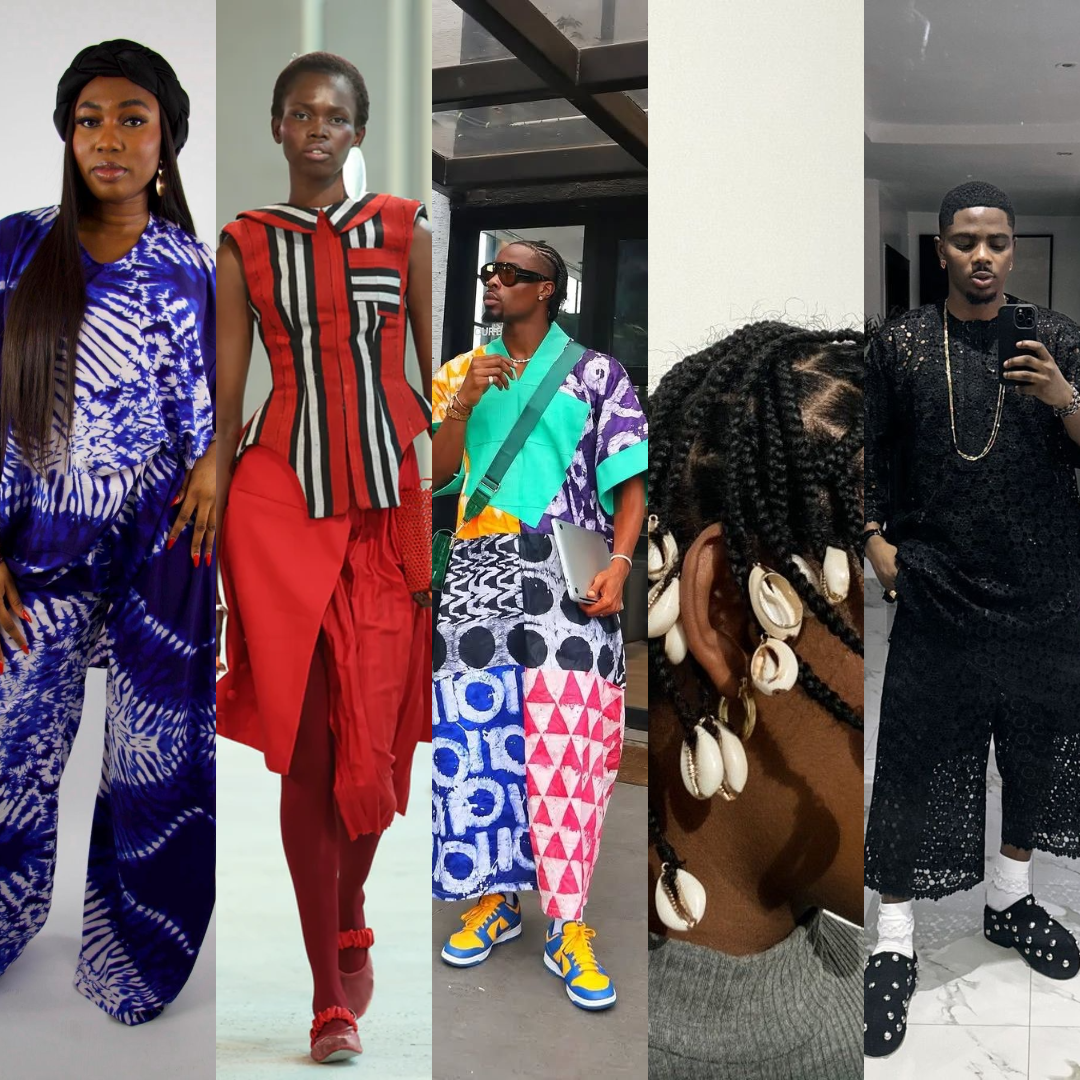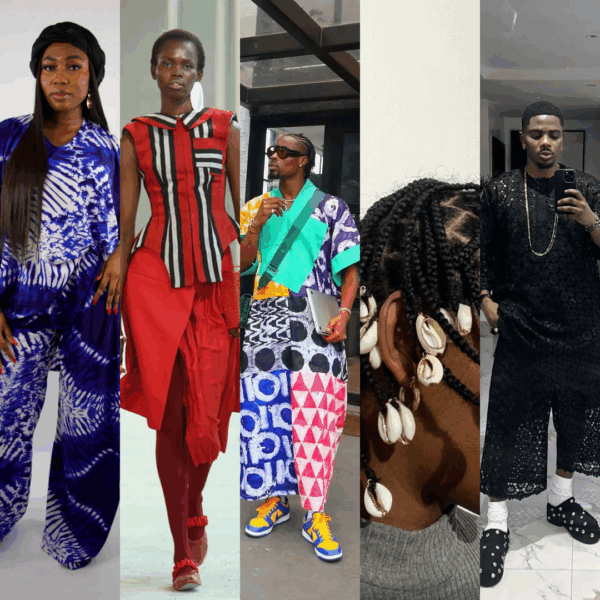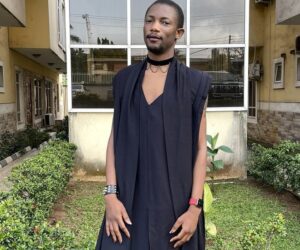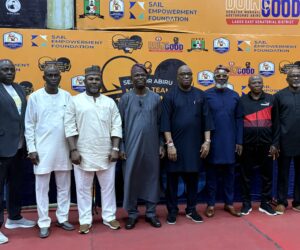
Fashion is often described as cyclical, and nowhere is this truer than in Nigeria. In 2025, the runway and the street are colliding with history as young Nigerians revive fabrics, styles, and accessories once confined to ceremonies or cultural traditions.
What used to be seen as “mama and papa fashion” has now become aspirational, stylish, and proudly Nigerian. What many don’t realise is that these so-called “new” trends have been part of Nigeria’s cultural DNA for decades.
Arguably, 2025 brought with it a fresh wave of nostalgia in fashion. From aso-oke reinvented as chic streetwear, to cowries adorning braids, and boubou gowns reclaiming the spotlight as genderless style staples amongst others. Clearly, Nigerians are looking to the past for inspiration and turning tradition into trend.
Here’s how these 5 timeless styles made a comeback this year.
1. Aso-oke
For centuries, aso-oke has been the fabric of prestige. Handwoven by the Yoruba people, it was reserved for kings, chiefs, and brides, worn only at weddings, festivals, and coronations.
The durability of the fabric makes it perfect for structured tailoring, while its metallic threads catch the light at parties and festivals. The patterns and colours carried meaning: deep indigos for purity, crimson for vitality, metallic threads for wealth.
This year, the heritage fabric, aso-oke, has moved from the palace to the streets. “I used to think aso-oke was only for very old people or for weddings,” says Dolapo Adegboye, a 24-year-old student in the UK.
“But when I wore an aso-oke corset gifted to me by a small brand from Nigeria to an event earlier this year, people here in the UK kept asking where I got it. It made me feel stylish and proud of Nigeria at the same time.”
Designers like Orange Culture and many others are cutting aso-oke into bomber jackets, mini-dresses, and corsets. Sneakers and handbags made from aso-oke have appeared on runways, while people now rock aso-oke two-pieces from events to everyday life.
For many Nigerians, the once-ceremonial fabric is now an everyday expression of identity. This modernisation has cemented aso-oke as one of the year’s hottest trends.
2. Cowries
Long before the naira, cowries were Nigeria’s money. They were symbols of wealth and power, used in trade across West Africa. Beyond currency, cowries were also spiritual and linked to fertility, used in divination or worn as charms.
These days, they are making a stylish comeback: braided into hairstyles, used for waist adornment, or strung as anklets. This confirms that they are no longer reserved for ritual use but are now part of everyday aesthetics.
Their symbolic power still resonates, but their appeal today is also visual and represents minimalist, oceanic, and earthy. “For me, cowries are more than just decoration,” explains Chiamaka, a 21-year-old student in Lagos.
“When I style them in my braids, I feel connected to my culture. And truthfully, I love when people see it and give me compliments for it”.
3. Boubou/Bubu Gowns
For decades, loose-fitting bubu gowns, originally adapted from Senegal and embraced across West Africa, have always been linked to grace and maturity and mostly found in our mothers’ wardrobes.
Flowing, comfortable, and often ankle-length, they were staples in Yoruba, Hausa, and Igbo households and even seen as “auntie” or “mama” fashion.
But not anymore; bubus are everywhere in 2025. Oversized chic versions are styled with sneakers, sunglasses, and mini purses, transforming them into casual streetwear.
Slim-fit bubus are also a trending sight at beach parties and sometimes weddings. Even male influencers and celebrities are experimenting with genderless bubu-inspired looks, proving the gown’s versatility across age and gender lines.
4. Adire
Adire, the Yoruba indigo-dyed fabric, tells stories through its motifs. Traditionally created by women in Abeokuta, each pattern had symbolic meaning representing unity, fertility, or resilience.
Today, adire is experiencing a vibrant renaissance. Multiple designers now showcase adire collections, reimagined into crop tops, two-piece sets, bomber jackets, and even swimsuits.
What was once seen as “village wear” has become a global export, appearing on international runways and in fashion-forward thrift stores.
Its eco-friendly dyeing methods, often using locally sourced indigo plants, align with the sustainability concerns. For young Nigerians, wearing adire is both a fashion statement and a declaration of cultural identity.
5. Lace
Perhaps the most surprising revival of 2025 is lace. Imported into Nigeria during colonial times, lace became synonymous with weddings, church services, and elite owambes.
Families often passed lace down through generations, and its intricate embroidery symbolised wealth.But lace has broken free from its ceremonial box.
Lighter cotton lace fabrics are now cut into crop tops, palazzo pants, and blazers. Modern tailors and designers are experimenting with lace bomber jackets and lace-trimmed denim.
This reinvention is not only stylish but sustainable as many young people are repurposing old family lace into trendy, modern pieces.
Why is Fashion Looking Back in 2025?
Nigeria’s 2025 fashion revival proves that culture never dies; it simply evolves. Globalisation has often threatened to erase tradition, but young Nigerians are flipping the script.
By combining heritage fabrics with modern silhouettes, they are not only reclaiming their identity but also redefining what it means to be fashionable in a globalised world.
So why is Nigerian fashion leaning into the past this year? A few reasons are:
-
Global heritage revival
Around the world, young people are reclaiming cultural roots in fashion and Nigeria is part of that wave or we can say Nigeria also caught the vibe.
-
Afrobeats influence
As Nigerian music dominates globally, so does Nigerian fashion. Artists are increasingly wearing traditional-inspired outfits on stage and red carpets to represent and promote their roots.
-
Identity and pride
For many Nigerians, wearing aso-oke, cowries, or bubus is more than style. It’s about heritage and self-expression without doing too much or derailing from originality.
-
Social media acceleration
Platforms like Instagram and TikTok amplify old trends, making them viral in ways most of us never imagined.
Culture never really disappears, it just transforms and 2025 Nigerian fashion is proof. By blending the old with the new, Nigerian designers and everyday style enthusiasts are proving that heritage is not a relic of the past but a tool for innovations.
These trends are no longer confined to ceremonies or nostalgia. They are living, breathing parts of Nigeria’s evolving fashion identity. In embracing these traditions, we Nigerians are not only reclaiming our past but also pushing our country forward globally.








